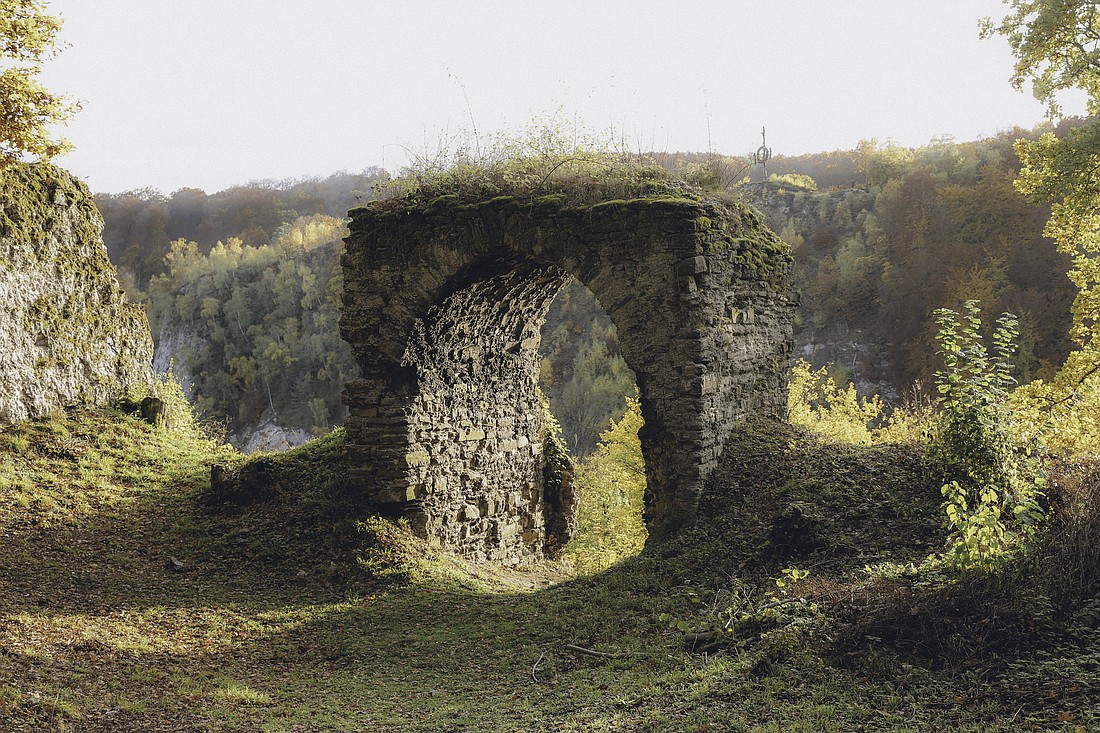- January 9, 2025
-
-
Loading

Loading

I am royalty. Well, my family has its own castle. OK, OK, it’s really just a crumbling remainder of the majestic palace of yore. But — it’s a castle, nonetheless. And it bears my name. The origins, anyway.
It was exciting to find out I have a castle, but then I learned I have a whole village honoring me. (Please don’t burst my bubble.) I’m on my way to haute and elite.
The remains of Questenberg Castle are visible in the steep Harz Mountains above the small Questenberg village in Saxony-Anhalt, Germany. It supposedly means “crested peak” or “plumed mountain.”
Whether we sign our name Questenberg, Quissinborow, Questynbery, Questenbury, Quisenberry, Quesenberry or, my personal favorite, Quesinberry — we are just one big probably-most-of-us-are-happy family.
It is believed that all of us Q’s are descended from one man. High up in our ancestral tree is the granddaddy of us all: Tielmann von Questenberg, born in Brunswick, Germany, around 1380.
He is noted as being the first to bear the surname Questenberg in our lineage.
I discovered a book on the families of that region that says the Questenbergs “rose in three generations from ordinary burghers to be barons, counts and imperial counts.”
I’m so proud of them; talk about social climbers.
Some sources say Tielmann’s father’s name was Heinrich, others say his name was Hermann — Lord Hermann, Count von Questenberg, an “Imperial Councillor of His Roman Imperial Majesty.” How’s that for a title?
So, technically, he was the count “of” Questenberg; it wasn’t his last name.
I also learned that two generations after Papa Tielmann, we married an English woman and settled in Canterbury, England. By then, the name had evolved.
We crossed the great pond to Virginia in the 1600s, made a few more spelling changes to the name, moved to Kentucky in the late 1780s and stayed there for many generations.
It has been fascinating to search on Ancestry.com and see original documents that were created decades before I was born. The U.S. Census conducts a headcount of the population every 10 years, and it’s easy to discover who was living under the same roof at a given time.
I have found that early census officials wrote illegibly and were prone to misspelling names, and the earlier the census, the more chances there are of an incorrect name. Many people could not spell their own names, so the census takers had to guess the spelling of the name based on how it was phonetically pronounced.
I personally know the struggle people have when it comes to correctly pronouncing or spelling my last name. It’s been butchered my entire life.
The name is revered in Germany even today. If you ever find yourself visiting Questenberg — and why wouldn’t you? — you need to go in the spring to witness something that is sure to be really fun — the Questen Festival, or Questenfest! I’m betting the annual event’s modern-day version includes a photo of me somewhere in the celebration.
The spring festival is an old village tradition that takes place on Pentecost weekend and involves an ancient pagan sun wheel (the queste) and a tree (the questenbaum).
As the village’s history dictates, a peeled oak trunk is carried up a high hill by the village’s manly men every 10 years. It is decorated with a wreath made of tree branches and two tassels made of birch twigs.
At sunrise on the Monday after Pentecost, the villagers remove the old wreath and burn it. In the afternoon, a wreath and tassels made from fresh birch and beech green are tied to the trunk until the next year’s festival.
There are several versions of the reason for the celebration. One legend says the castle lord lost his daughter in the nearby forest and asked the villagers to help look for her. On the third day of the Pentecost holiday, they found her in a field playing with a crest with two tassels.
Some guy’s blog said it represented war, order and organized society. Another explanation is that it was originally a fertility symbol. Another called it a Germanic sun cult. I swear I’m not making this up.
At the top of my bucket list is to visit Questenberg and Questenberg Castle, definitely in the springtime. I wonder if Quesinberrys get free admission or a free refrigerator magnet?
Also on my list is a visit to Carew Castle, a family get-away in Wales on another branch of Daddy’s tree on his mother’s side. But that’s a story for another time.
Isn’t ancestry fascinating? You might want to see what your ancestors were up to. You could have a castle, village or festival, too.